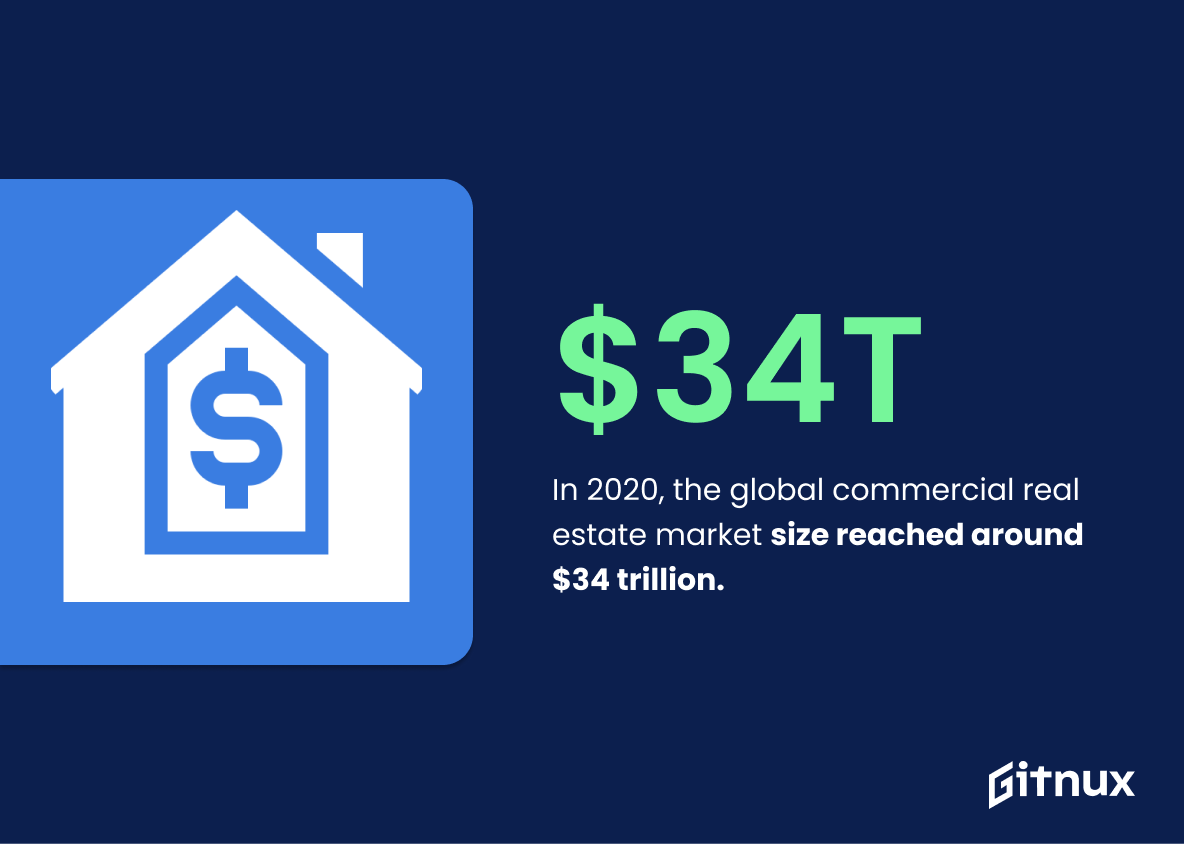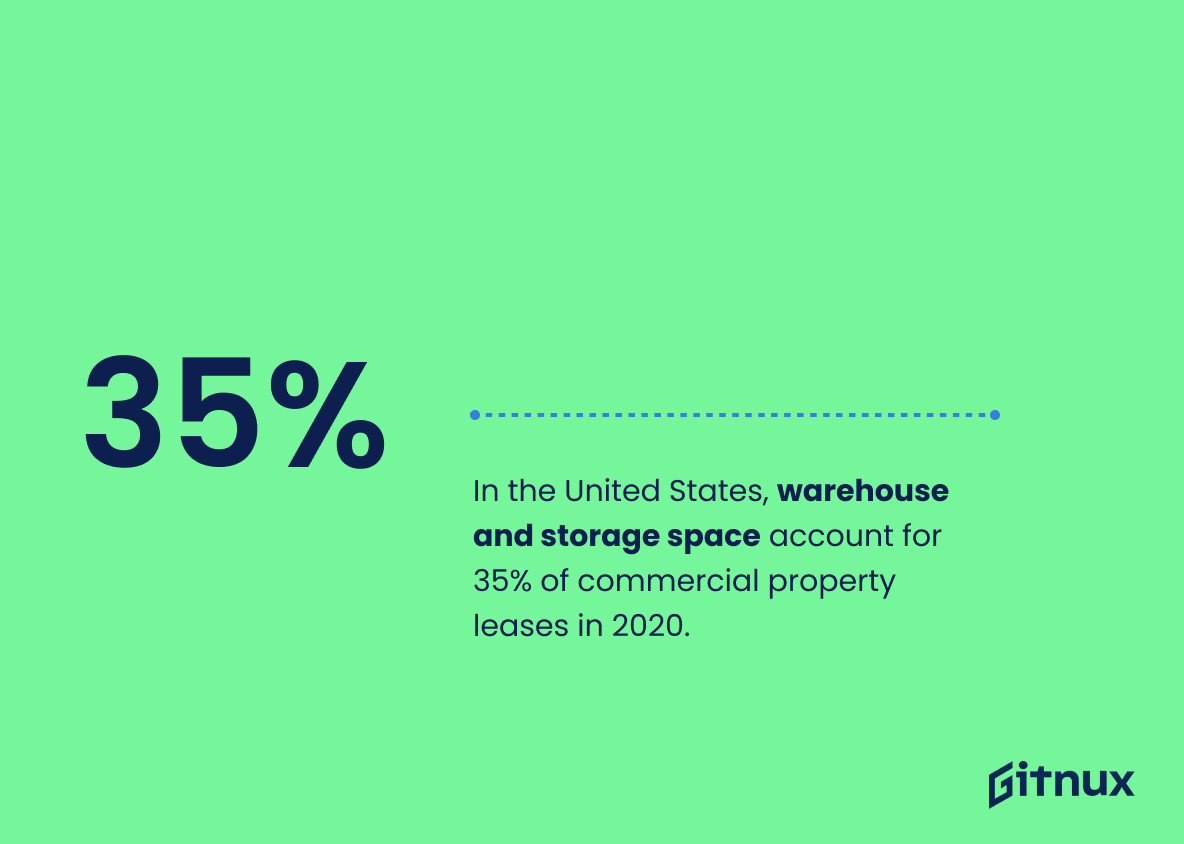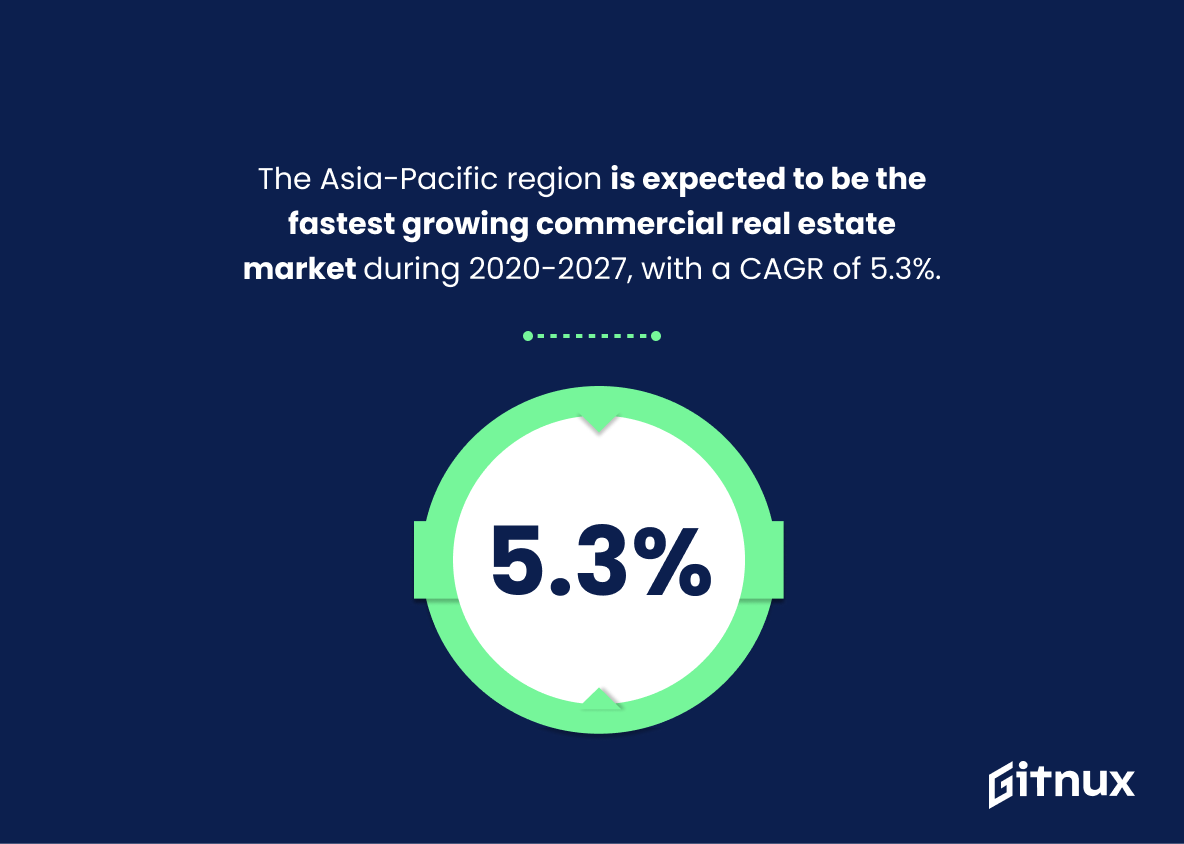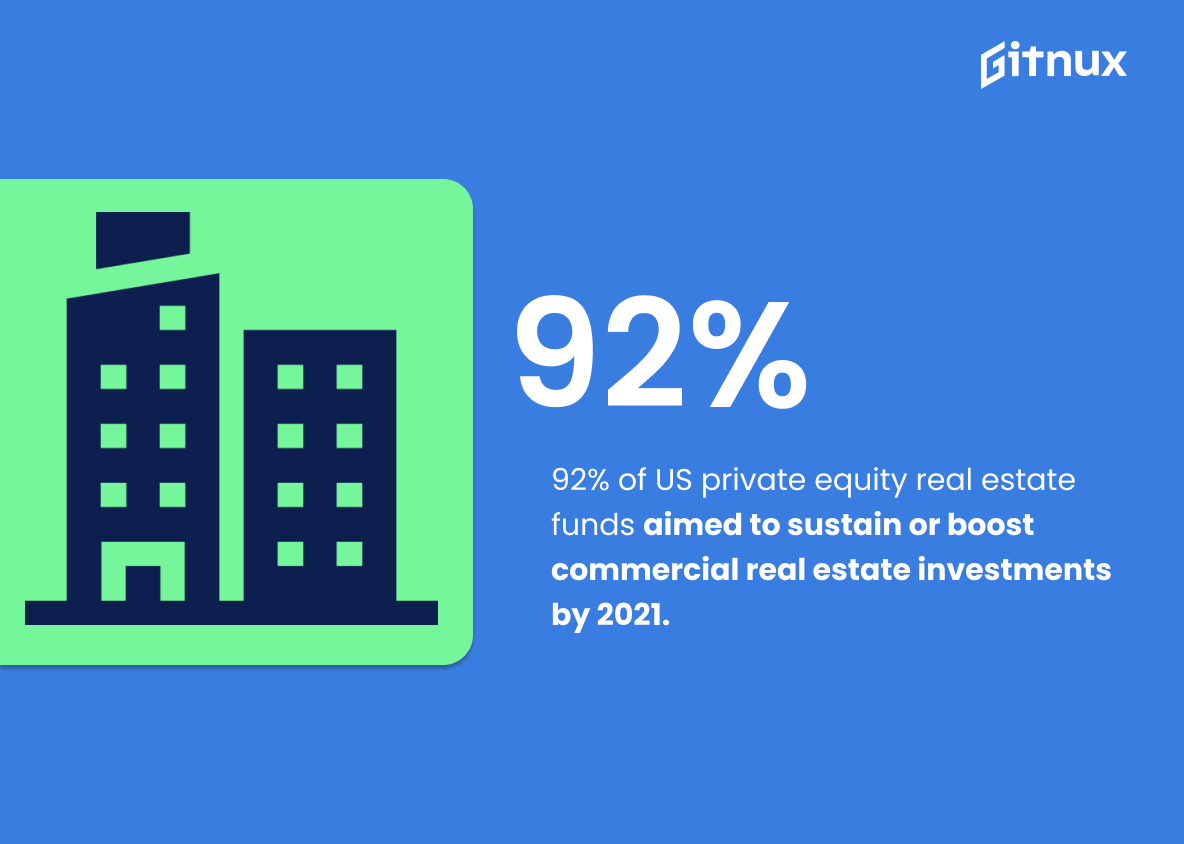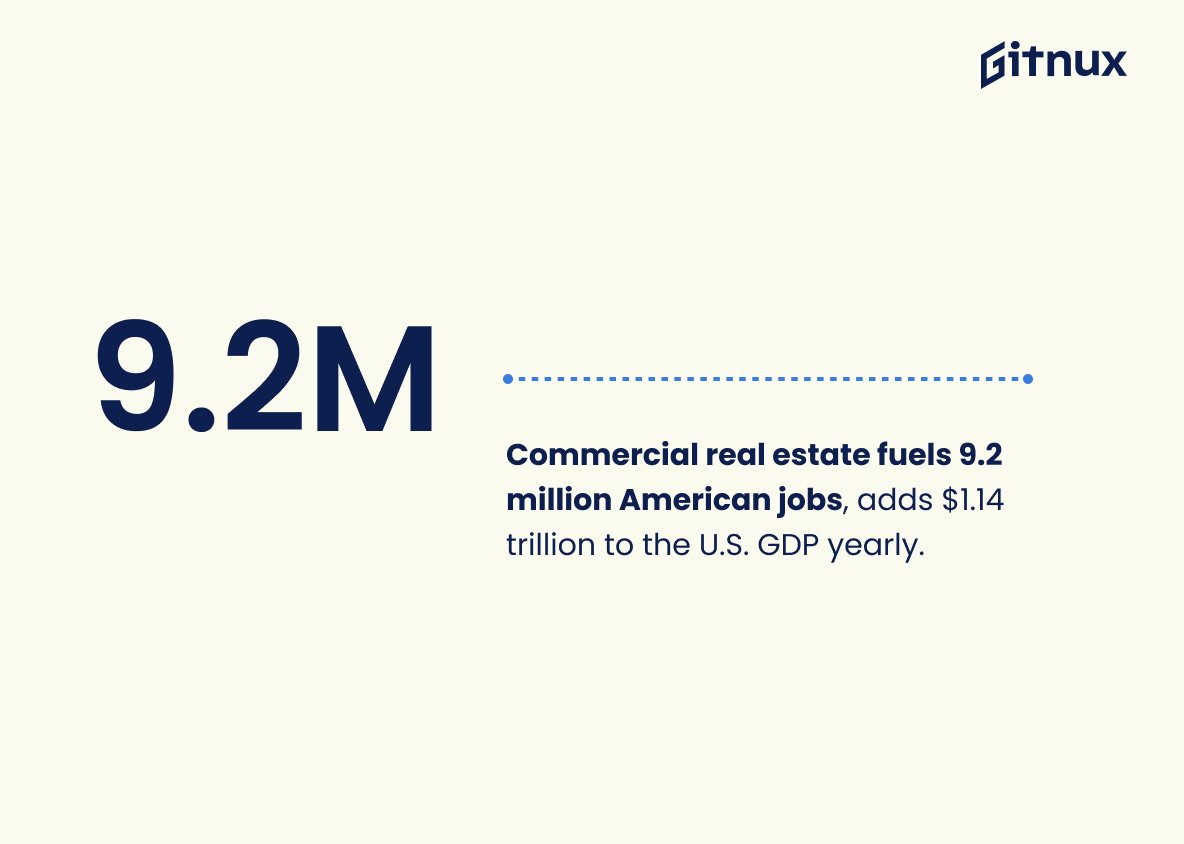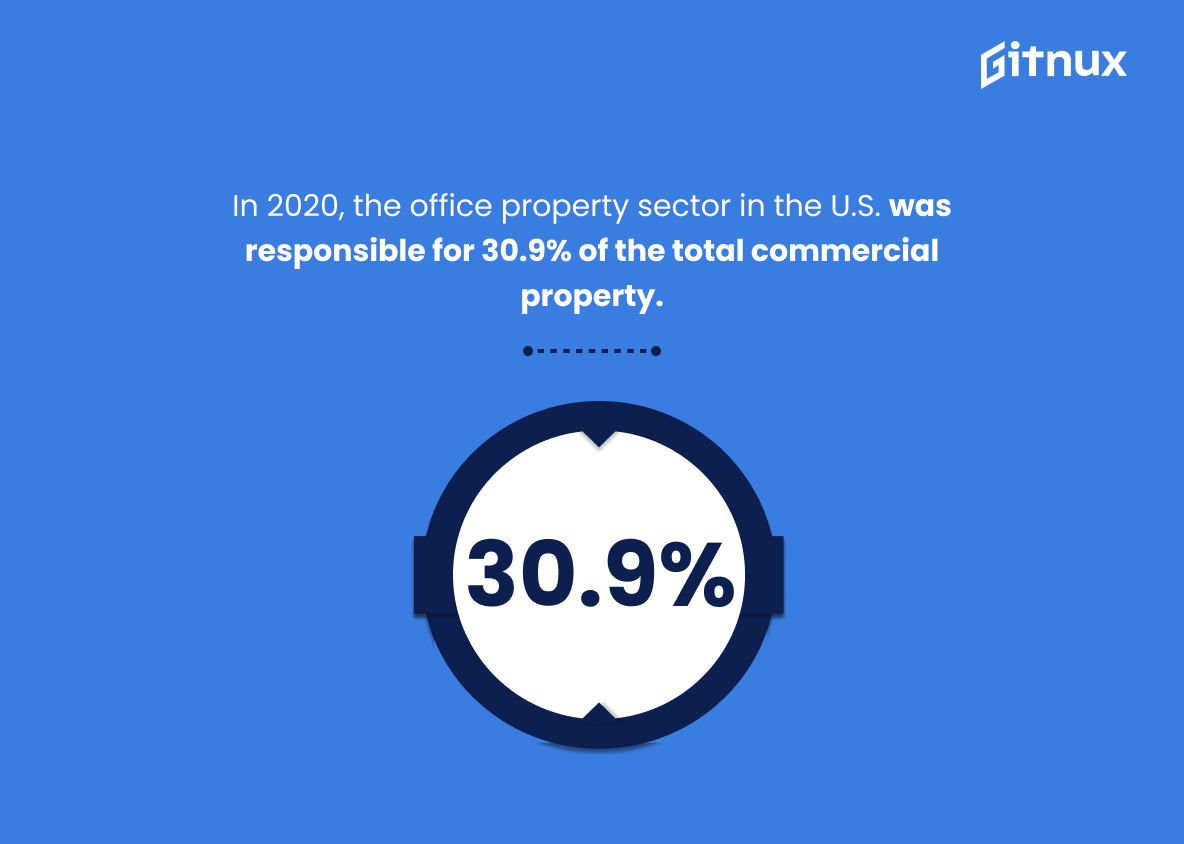Navigating the vast terrain of the commercial real estate industry can often seem like a challenging task, significantly due to the dynamic nature of its variables. One can’t undermine the significance of detailed and concise statistics in this lucrative yet intricate landscape. This blog post will serve as your compass, guiding you through the latest trends, projections, and data shaping the commercial real estate world.
Whether you are a flourishing investor, a seasoned realtor, or simply someone with a keen interest in the commercial property market, understanding these industry statistics is instrumental in making informed decisions and anticipating future market trajectories. Buckle up as we delve into the fascinating realm of commercial real estate figures, exploring its complex corridors and uncovering insights you can’t afford to miss.
The Latest Commercial Real Estate Industry Statistics Unveiled
In 2020, the global commercial real estate market size reached around $34 trillion.
The staggering $34 trillion market size of the global commercial real estate industry in 2020 serves as a prominent testament to the sector’s significance and resiliency. This figure dramatically underlines its pivotal role in supporting global economic stability and growth.
For business leaders and investors diving into a blog post about Commercial Real Estate Industry Statistics, this statistic is akin to the north star, guiding their understanding of the industry’s heft, opportunity, and potential. It sets the stage for an in-depth discussion of commercial real estate as not only a cornerstone of local economies but also a vital player in the global financial theater.
There were approximately 3.5 million commercial buildings in the United States in 2018.
Unfolding this key piece of data, spotlighting approximately 3.5 million commercial buildings thriving across the United States in 2018, we uncover the pulsating heart of the Commercial Real Estate Industry. This number, teeming with promise, forms an intriguing foundation for our understanding of the industry’s size, its robust growth, and propensity for future expansion.
It serves as an integral benchmark that integrates into a timeline of the industry, ushering in an opportunity to gauge the growth rate or predict future trends. Moreover, these numerical whispers from 2018 can empower investors, businesses, and policymakers with insights to make informed decisions—be it for investment, planning commercial strategies, or shaping real estate regulations. Indeed, it illuminates the landscape of American business infrastructure and stands testament to the significance of the industry itself.
In the United States, warehouse and storage space account for 35% of commercial property leases in 2020.
Unraveling the significance of this glaring statistic, the fact that warehouse and storage space constituted 35% of U.S. commercial property leases in 2020, shines a spotlight on a compelling trend in the Commercial Real Estate industry. What this revelation underscores is the rising demand for such spaces, likely driven by the boom in e-commerce and online shopping amid the global pandemic. Consequently, this wave of change also indicates a drastic shift in investment strategies in commercial realty, with warehouse and storage facilities emerging as resilient and lucrative investment options.
About 53% of commercial real estate executives in the U.S. expect ESG criteria to become more influential in investment decisions in 2021.
Delving into the statistic at hand, it dramatically underscores the evolving landscape of the U.S. commercial real estate industry. The focus is shifting significantly towards Environmental, Social, and Governance (ESG) criteria, a trend that over half, precisely 53%, of industry executives anticipate to gain more traction in 2021. This impending change promises to leave a lasting impact on investment decisions.
Positioning this in a blog post about Commercial Real Estate Industry Statistics not only enhances its credibility but also provides useful insights into the future direction of the industry. Readers can better appreciate the real estate scene’s evolution, preparing them for a future where sustainability and responsible governance are more than just supplementary factors – they’re becoming top considerations for investments.
The statistic resonates with the changing preferences of the stakeholders, marking a major shift in industry dynamics. Therefore, it’s a valuable addition to any comprehensive discussion about the commercial real estate industry.
The Asia-Pacific region is expected to be the fastest growing commercial real estate market during 2020-2027, with a CAGR of 5.3%.
Diving into the pulsating rhythm of these figures, one can envision the growth trajectory that the Asia-Pacific region is embarking on regarding the commercial real estate market. With an anticipatory Compound Annual Growth Rate (CAGR) of 5.3% from 2020 to 2027, this region is poised to set the pace in this industry.
In the grand mosaic of commercial real estate industry statistics, this statistic serves as a pivotal, intriguing piece. This is a shimmering beacon of where the future hotspots of commercial real estate expansion will be. For investors, developers and stakeholders, this figure is akin to a compass, pointing towards potential opportunities and untapped avenues for growth and investment in the Asia-Pacific region.
It’s not just a number, it’s the narrative of a rapidly evolving market landscape, altered business strategies, gleaning potential econometrics and forecasting the real estate tableau in the Asia-Pacific realm over the better part of this decade.
Ninety-two percent of U.S. private equity real estate funds planned to maintain or increase their investments in commercial real estate as of 2021.
The pulse of the commercial real estate industry can be vividly felt through this striking statistic: ‘An overwhelming 92% of U.S. private equity real estate funds had a blueprint to keep or augment their investments in commercial real estate as of 2021’. This data point stands as a testimony to the industry’s robust health and optimism among investors, despite economic uncertainties.
In the vibrant tapestry of a blog post on commercial real estate industry statistics, this fact serves as a potent thread. It colors the narrative with powerful evidence of confidence and sheer belief in the strength of the sector. Deeply underscored by this statistic, investor enthusiasm forms a critical backdrop against which other industry trends and predictions gain additional significance.
Moreover, by providing a window into the investment intentions of key stakeholders, this statistic allows readers to appreciate the dynamics of demand and supply, price movements, and return on investments. Anyone desiring to understand the landscape of the commercial real estate industry simply can’t ignore this revealing piece of data.
So, the next time you ponder over the future of commercial real estate, remember that 92% of U.S private equity real estate funds were not just spectators but active players, ready to seize the opportunities in this market as of 2021.
Retail represents around 24% of all commercial real estate in the U.S., as of 2020.
Diving into the sea of Commercial Real Estate Industry Statistics, we stumble upon an intriguing fact – Retail represents around 24% of all commercial real estate in the U.S., as of 2020. This, my dear readers, is not just a random number, but a depiction of retail’s significant footprint in the commercial real estate landscape.
Now, why should your eyebrows go up at this particular digit? Let’s unfurl the mystery. This figure speaks volumes about the dominance of the retail sector within commercial real estate, influencing not just market trends and investment potential, but also the shifting dynamics of urban development. It paints a vibrant picture of consumer behavior, economic health, and growth patterns, weaving a narrative that curiously intersects savvy investor strategies and the everyday American’s shopping habits.
Moreover, it acts as a barometer for gauging the impact of e-commerce disruption on brick-and-mortar establishments. Multiple factors such as changing customer preferences, rise of online shopping, and the recent pandemic have brought unprecedented challenges to the retail industry. Having around a quarter of the commercial real estate pie, the evolving state of retail directly reflects on the overall health and future direction of the commercial real estate market. It’s like prying open a window into a world of vital insights and industry-shaping trends. So, we should pay attention to this percentage not just as a number but as a lighthouse guiding us through the choppy waters of commercial real estate.
The commercial real estate development industry supports 9.2 million American jobs and contributes $1.14 trillion to the U.S. GDP annually.
Unraveling the intricate web of the commercial real estate industry’s significant influence, this statistic sketches an image of critical economic prowess. A mammoth supporters of 9.2 million American jobs, it acts as a robust pillar to the U.S job market.
Simultaneously, this industry’s vast contribution to the GDP underscores its non-negotiable role in maintaining the nation’s economic health – an annual infusion of a whopping $1.14 trillion. This numeric revelation paints a vivid tableau of the industry’s overarching strength, playing an essential part in a blog post dissecting Commercial Real Estate Industry’s impressive statistics.
In 2021, 65.8% of UK commercial properties were owner occupied.
Delving into the fabric of the UK’s commercial real estate industry, the striking illumination that 65.8% of the properties were owner-occupied in 2021 offers an insightful peek into the underlying dynamics. It conveys, dramatically, the significance of ownership in this sector and how heavily it leans towards self-use rather than lease-out ventures. A fact such as this paints a picture of a possibly risk-averse market, prosperous in owner-entrepreneurs.
Moreover, it hints at the potential effects on rental prices, vacancy rates, and the flexibility of the commercial property market. Conversely, it raises questions about available opportunities for businesses searching for rental spaces. Quite the revelation, such findings encourage intellectual curiosity about industry trends, thus making it an indispensable gem within the blog post.
In 2020, the office property sector in the U.S. was responsible for 30.9% of the total commercial property.
Diving into the heart and soul of this statistic, a surface-level interpretation offers an insight into the commercial real estate industry’s balance, while a deeper exploration unveils the thriving life-blood and the immense contribution made by the office property sector in 2020. Indeed, with a hefty footprint of 30.9% in the U.S commercial property landscape, the office property sector persevered, illustrating its robustness within the context of a tumultuous year globally.
This figure serves as a guiding compass, shaping discourse and business strategies in the commercial real estate industry. It paints a vivid landscape of opportunities, challenges and in-depth understanding of the interplay between the various property sectors. This statistic assertively echoes the resilience, worthiness and indispensability of the office property sector in the U.S., thereby influencing investment decisions and real estate market forecasts.
New York remains the largest U.S. market in terms of office inventory with nearly 550 million square feet as of Q4 2020.
Unveiling the magnitude of New York’s office inventory, which amasses to nearly 550 million square feet in Q4 of 2020, cogently illustrates its reigning position as the most mammoth U.S market. This resonates profoundly with the narrative of the Commercial Real Estate Industry Statistics, serving as a testament to the city’s influential role as an economic fulcrum.
Thoughtful observation of this statistic infers New York’s undeniable pull within the office space niche, dictating not only the demand for but also the design and management of commercial spaces. Implicitly, it nods to the dynamics of infrastructure planning, property prices, rental rates, and commercial revenue generation. Consequently, it establishes an outlook on the market trends, investment prospects, and the larger trajectory of the commercial real estate industry.
Moreover, the impressive size of New York’s office inventory can also signal the rich entrepreneurial climate that preserves the city’s reputation as a coveted global business hub.
In essence, this statistic, far from being a mere datapoint, opens up a broader discourse on urban development, economics, and commercial strategy, rendering it an invaluable part of the blog post’s context.
In 2020, the commercial property in the United States valued at about $16 trillion.
Painting a vivid landscape of the Commercial Real Estate (CRE) Industry, the spectacular figure of $16 trillion underscores the sheer weight and dynamism involved in the U.S. Commercial property market as of 2020. Crucial to any analysis or evaluation, this titanic valuation underwrites the critical role that commercial property plays in the U.S. economy.
It offers a snapshot of the vast scope of transactions, investments, and potentially lucrative opportunities within the sector. Furthermore, it primes readers for an in-depth appreciation of patterns, trends, and future forecasts in the CRE industry, effectively contextualizing a series of related statistics that follow in the blog post.
Commercial real estate contributes about 13% to the U.S. GDP.
Delineating the significance of the statistic, “Commercial real estate contributes about 13% to the U.S. GDP”, in a blog post about Commercial Real Estate Industry Statistics, enriches the reader’s discourse of the economic interplay, breaking down the mammoth sphere of economics to the stake the commercial real estate has in it. The figure cascades a sense of comprehension of just how profound the impact of this particular industry is on the nation’s overall economic health.
Evoking insights into the vitality of commercial real estate, it lays a direct path to understand its ripple effects on job creation, business growth and prosperity levels. So, with a lense focused on the enormity of its contribution, developing strategies and making informed decisions in this industry bears an unignorable weight.
In 2020, the vacancy rate for retail malls in the U.S. was approximately 10.2%.
Highlighting the statistic of the 10.2% retail mall vacancy rate in the U.S. in 2020 underlines a significant trend in the commercial real estate landscape. It brings into sharp focus the headwinds that the retail sector has been grappling with, likely as a result of changing consumer behavior and the exponential growth of online shopping.
Interpreting such data allows industry players, investors and policy makers to better comprehend the state of commercial real estate, particularly the retail segment, thereby guiding more informed decisions regarding leasing, investment, redevelopment, or policy-making. Ultimately, it’s a powerful pulse check on the industry’s health and future.
Commercial property insurance premiums in the U.S. are projected to increase by 20% in 2021.
The soaring growth of 20% projected for U.S. commercial property insurance premiums in 2021, sends strong ripples across the commercial real estate industry landscape. It serves as a barometer for escalating operational costs for property owners and investors, possibly resulting in higher leasing rates to offset the surge in insurance costs. This considerable increase could also trigger a more comprehensive risk-management strategy from stakeholders, urging them to examine the true value of their investments closely.
For prospective investors, it paints a clear picture of potential financial obligations in the foreseeable future, encouraging careful evaluation of market risks as compared to potential returns. In essence, this statistic is an essential compass guiding navigation of the nuances of financial dynamics in the commercial real estate industry.
Conclusion
In reviewing the commercial real estate industry statistics, we observe a dynamic, resilient sector adapting to global market shifts and innovations. Despite challenges, such as economic downturns or global disruptions, the real estate industry continues to be a pillar of investment and growth. These statistical insights offer not only a glimpse into its present state but also a forecast of its future.
They shape strategies, influence business decisions, and provide potent indicators for investors, developers, real estate professionals, and economists. As we move forward, keeping a keen eye on these statistics will be instrumental in understanding and capitalizing on the commercial real estate industry’s ever-evolving landscape.
References
0. – https://www.propertydata.com
1. – https://www.www.naiop.org
2. – https://www.www.mba.org
3. – https://www.mf.freddiemac.com
4. – https://www.www.ibisworld.com
5. – https://www.www2.deloitte.com
6. – https://www.www.iwfm.org.uk
7. – https://www.commercialobserver.com
8. – https://www.www.insurancejournal.com
9. – https://www.www.statista.com
10. – https://www.www.colliers.com
11. – https://www.www.fortunebusinessinsights.com
